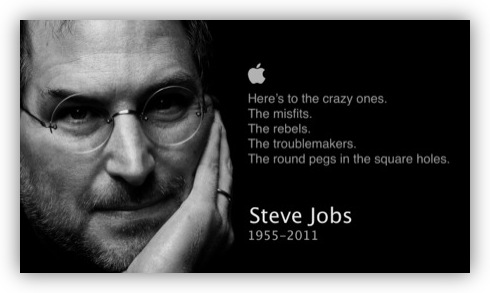Jan
29
Tips for Photographing Stars With Basic Equipment
Filed Under Science & Astronomy, Photography | 9 Comments
 Hard-core astrophotography is very difficult, and requires quite a lot of quite expensive equipment, but, you can do surprisingly much with surprisingly little if you don’t set your expectations unrealistically high. The big problem with the night sky is that it moves. Well, strictly speaking it’s the earth that’s moving rather than the sky, but the point is, stars don’t appear to stand still. Normally when you have a subject that’s dim, you use a tripod and just leave the shutter open for as long as it takes, but since everything astronomical is always on the move, that doesn’t work! The way the pros get around this is with expensive mounts that track the movements of the heavens, opening up the possibility of long exposures. With that problem over-come the pros then run into a whole new set of problems with how noise builds up in sensors over long exposures, so they end up needing some quite advanced techniques and a lot of software and skill as well as the fancy hardware.
Hard-core astrophotography is very difficult, and requires quite a lot of quite expensive equipment, but, you can do surprisingly much with surprisingly little if you don’t set your expectations unrealistically high. The big problem with the night sky is that it moves. Well, strictly speaking it’s the earth that’s moving rather than the sky, but the point is, stars don’t appear to stand still. Normally when you have a subject that’s dim, you use a tripod and just leave the shutter open for as long as it takes, but since everything astronomical is always on the move, that doesn’t work! The way the pros get around this is with expensive mounts that track the movements of the heavens, opening up the possibility of long exposures. With that problem over-come the pros then run into a whole new set of problems with how noise builds up in sensors over long exposures, so they end up needing some quite advanced techniques and a lot of software and skill as well as the fancy hardware.
I don’t have any of the fancy gear, nor any of the fancy software, nor indeed, the skills needed to get good results out of the equipment I don’t have! But, I can still get a descent shot of a star field, and all I need is three things:
- A camera that will allow manual control of the aperture, shutter speed, ISO and white balance, exposure times of up to 30 seconds, and manual focusing or some form of focus lock
- a tripod
- A remote shutter release (or, as a work-around, a delayed shutter release mode)
I did also mention that you need realistic expectations, basically, what we’re aiming for here is shots of large sections of the sky. Think a nice shot of a constellation. If you have visions of detailed views of spiral galaxies in your head – get them out now – that’s for the pros with their fancy kit!
Jan
4
It’s primary time in the US, and Mitt Romney is running again, so of course you can’t drown out the chorus of pundits denigrating him for being a ‘flip-flopper’. It would appear that in the mind of much of the popular press on the west side of the Altlantic, keeping an open mind is an unforgivable crime!
Before you all think I’ve gone mad, I am NOT saying Mitt Romney is great, I’m saying the problem with him is not THAT he changes his mind, but his dishonesty about his many reversals. A good leader will be guided by his core principles, and reality. His principles should not change, but reality does, inevitably, and eternally. As reality evolves, the best avenues to peruse your principles have to evolve as well. If you want to live in a well run country you should applaud political leaders who have the courage to re-evaluate their plans and proposals as situations evolve.
Jan
3
Why Did Steve Choose Walter Isaacson?
Filed Under Computers & Tech | 1 Comment
I finished the Steve Jobs biography by Walter Isaacson quite some time ago, but I didn’t bother to blog a review because I didn’t think I had anything to contribute to the discussion that hadn’t already been more eloquently argued by others. But, when listening to John Gruber and Dan Benjamin discuss the book on the Talk Show podcast a few weeks back, they raised a question that piqued my interest, why did Steve choose Walter Isaacson to be his authorised biographer? You have to remember that this biography did not get written because the author was really interested in Steve Jobs and begged and pleaded for cooperation, if anything, the inverse is true. In the introduction to the biography Isaacson explains that it was Steve who asked him to do the book, and that he repeatedly turned Steve down before finally giving in (to the inevitable?). Isaacson specifically mentions that Steve had cited his love of his biography of Albert Einstein as one of his reasons for wanting him as his biographer, so I figured I’d give that a read too, and see if it helped me to understand Steve’s decision to head-hunt Isaacson.
Dec
31
 Something I like to do at the end of every year is look back at how my photography has evolved over the year. I find it helpful to take the time to reflect, and I think it helps me to keep developing my skills and my style.
Something I like to do at the end of every year is look back at how my photography has evolved over the year. I find it helpful to take the time to reflect, and I think it helps me to keep developing my skills and my style.
It’s been a funny year for me, having struggled all year with health issues, but I still managed to keep taking photos, even if I did it less often, and even if my Photo of the Week segment on this blog fell into dereliction. Most of my photography this year was done while out on my doctor-mandated exercise routine, so more then normal, my shots all gravitate around the Royal Canal, and later in the year, also Carton Estate (after I discovered the great trails the estate has to offer). There were also strangely few shots taken in St. Patrick’s College, which was once one of my favourite muses.
In some ways it was a very evolutionary year for me, rather than a revolutionary one, I focused mostly on my on-going projects, trains, nature macros, and the Royal Canal, and didn’t really start any new projects. I also spent time re-visiting my experiments with long exposure shots, and also paid a lot of renewed attention to including the Moon in my shots, particularly in the second half of the year. I guess the most dramatic changes are that I’ve updated my HDR workflow in such a way that I find I get better results in situations with mixed white balances, and I’ve definitely made more of an effort to re-visit interesting places when the light is good, rather than making do with OK light. Read more
Nov
25
I ran into a problem this week when the perl libraries for accessing MySQL databases refused to work on Mac OS X Lion. I did a ‘regular’ install:
- Install the 64bit version of MySQL Community Server (being sure to use the .dmg version so as to get the .pkg installer)
- use CPAN to install the needed database libraries:
$ perl -MCPAN -e shellcpan[1]> install Bundle::DBIcpan[1]> install DBD::mysql
There were no errors during the install, so I assumed all we well, until I tried to actually use the libraries to access a database that is! Using DBI to try connect to a MySQL database gave the following error:
install_driver(mysql) failed: Can't load '/Library/Perl/5.12/darwin-thread-multi-2level/auto/DBD/mysql/mysql.bundle' for module DBD::mysql: dlopen(/Library/Perl/5.12/darwin-thread-multi-2level/auto/DBD/mysql/mysql.bundle, 1): Library not loaded: libmysqlclient.18.dylib Referenced from: /Library/Perl/5.12/darwin-thread-multi-2level/auto/DBD/mysql/mysql.bundle Reason: image not found at /System/Library/Perl/5.12/darwin-thread-multi-2level/DynaLoader.pm line 204.
After a lot of googling I found plenty of people with the same problems, including people on Snow Leopard, so I figured this was not a new problem. I tried a number of the suggested solutions, and most did not work, but after two days of trying, I found one that did, and it was wonderfully simple!
The problem is that the MySQL libraries are not in the OS’s library path, so they are not being found, most of the proposed solutions tried to tackle the problem at compile time, or to use simlinks to hack the libraries into the path, but like I say, these solutions didn’t work for me. What did work is simply updating the library path in my environment!
If you run the command below before executing your Perl script the library is found and all is well!
export DYLD_LIBRARY_PATH="/usr/local/mysql/lib:$DYLD_LIBRARY_PATH"
It’s a little awkward to do this all the time, so I added the line to my ~/.bash_profile file, and now it just works for me!
I spent two frustrating days trying to fix this, so hopefully I’ll save others some time by sharing my solution.
Oct
29
Pumpkin Soup
Filed Under Cooking & Food | 2 Comments
It’s been a LONG time since I posted to this series, but I was preparing for Halloween today, and decided I may as well grab some pictures while I worked so I could share my recipe with the world. Because it was un-planned the pics are not great, and my kitchen was less than spotless, but still, I think the shots are good enough to illustrate this quite simple recipe.
Ingredients:
- Half a small pumpkin
- Four onions
- Four potatoes
- Parsley (fresh preferred, but dried OK)
- Thyme (dried)
- Salt & Black Pepper
- OPTIONALLY – Nutmeg, Coriander, and Cumin
- VERY OPTIONALLY – Cayenne Pepper, and Curry Powder

Oct
6
Remembering Steve
Filed Under Computers & Tech | 4 Comments

Apple have asked Mac fans to share their thoughts on today’s passing of Steve Jobs with them via [email protected]. I’ve just sent off the email below – please consider taking some time out of your day today to share your thoughts too.
Subject: May his legacy out-shine his short time on this Earth
As one of the very many relatively recent Apple converts, I’d always hoped there’d be many more keynotes to come, and many more revolutions for Steve to introduce us all to. I wasn’t there for the unveiling of the Mac in 1984, or the iMac on Steve’s return to Apple, or OS X, or even the iPod, but I did get to enjoy the keynotes that introduced the world to the iPhone, the iPad, and iCloud. I think it’s safe to say that the first two of those have already revolutionised our interaction with the world, and I lets hope iCloud goes on to do the same.
I’m tempted to dwell on thoughts of all the great things Steve could have shared with the world had he been as immortal as we all wished, but I think that’s the wrong way to look at things. Steve planted a seed, watered it, and cared for it for years. That seed has developed into a strong and vibrant young tree, which is mature and strong enough stand alone now. It’s a tree that will bear many more great fruits, and each of those fruits will be infused with Steve’s passion and vision. I don’t think it’s possible to extract Steve’s values or aspirations from Apple any more, so in my mind, a part of him has found immortality. A strong, vibrant, and innovative Apple will serve as the best possible memorial to Steve. I hope his family and friends will be able to take some comfort from watching his legacy grow, mature, and blossom.
Here’s hoping that Steve’s legacy through Apple, Pixar, and his family, will stand as a beacon through time for much longer than the 56 short years of his life.
Bart Busschots,
co-Producer,
International Mac Podcast.
Oct
3
Introducing www.xkpasswd.net & xkpasswd.pm
Filed Under Computers & Tech, Software Development, My Projects | 6 Comments

Steve Gibson really set the cat among the pigeons with his Password Haystacks site a few months ago, and XKCD’s ‘Correct Horse Battery Staple’ web comic brought that message home to many many nerds and geeks. The basic idea is that you’re better off making your passwords long and memorable than short and complex. In the simplified XKCD example the password is simply made up of 4 common words, but Steve Gibson suggests you should add some padding around those words to make the passwords much harder to guess.
This is a lovely theory, but I’m not imaginative, and I need to invent a lot of passwords every week, so I wrote a Perl module to do it for me, and called it xkpasswd.pm. The first thing I’m announcing today is that I’ve made this library available for free for both personal and commercial use (under the FreeBSD license), you can download it from www.bartb.ie/xkpasswd.
It’s great to have a library for nerds to play with, but what about everyone else? Well, that’s where my second announcement comes in, I’ve also created www.xkpasswd.net, a simple web front-end to the xkpasswd.pm module.
In case anyone is wondering where the name comes from? It’s a mashing together of XKCD, and passwd, the Linux/Unix command for changing passwords. Because I used to use Solaris, and hence the yppasswd command, I liked the idea of keeping the prefix to just two letters, hence xkpasswd, rather than xkcdpasswd.
For any programmers interested in using the Perl module, it has no prerequisites other than base Perl, and all you need to get started is the module and a dictionary file to point it at. The download package contains the module, a sample dictionary, and a sample Perl script which invokes the module.
In the future I also plan to release a JavaScript-only version if the library so that others can embed xkpasswd-based password generators in their own sites without needing Perl CGI support on their servers. I’m also experimenting with creating an OS X Service to allow people to easily generate xkpasswd passwords from anywhere within OS X, and perhaps even a native OS X Application. So stay tuned!
Aug
19
OS X Lion – Maybe it’s not ‘iPadification’ but ‘Startrekification’?
Filed Under Computers & Tech | 6 Comments
With the release of Lion there seems to be wide-spread fear, bordering on panic in some quarters, that it’s the start of the end of the Mac. The feeling seems to be that Steve is pushing us all towards iPads and iPhones, and that he’s going to leave all us power users in the lurch. Sine Apple watching is so much like Kremlinology, we can’t just ask Apple PR where they are headed, we have to infer and imply based on the past and the present. The doom-sayers are projecting a future where Apple dumb-down their desktops and laptops to the point that they have no more power than their iPhones and iPads. When I look at the same past and present, I see Apple moving towards a very different future, not one where Macs become iPad-like, but one where Apple unify the look, feel and design philosophy across all their computing products, but where no features are lost. The best analogy I can come up with is the computing experience aboard the Star Ship Enterprise (the D of course), Apple are not moving to ‘iPadify’ the Mac, they are moving to ‘Startrekify’ their entire line.
Jul
1
Getting ClamXav to use a Proxy Server
Filed Under Security, System Administration, Computers & Tech | 4 Comments
I’ve been looking at different free Mac AV solutions so that I can make recommendations to less-computer-savy family members, and this afernoon I decided to give ClamXav a go. I’d tried it a few years ago and wasn’t very happy, but I’d been told by friends that it has improved a lot since, and a first glance at the GUI suggests they’re right. Unfortunately I didn’t get very far with my initial testing this afternoon because I’m in an environment where I have to use an HTTP proxy server to access the net, and ClamXav appears not to support proxies at first glance. It ignores OS X’s system-wide proxy settings, and it has no interface elements of its own to allow you to specify a proxy server manually. This implies that ClamXav doesn’t support proxies, but it actually does, they just didn’t bother to expose that functionality through the GUI.
ClamXav is just a GUI wrapper for the free and open source Clam AntiVirus toolkit, and it uses Clam’s regular auto-updating tool freshclam. Although the ClamXav GUI doesn’t give you control over the variables in the freshclam configuration file, that file does exist as part of ClamXav (/usr/local/clamXav/etc/freshclam.conf), and if you edit it manually it will respect the settings specified in that file. If you’re not afraid of the Terminal, you can easily edit this configuration file manually to get ClamXav to use a proxy server for updates.








